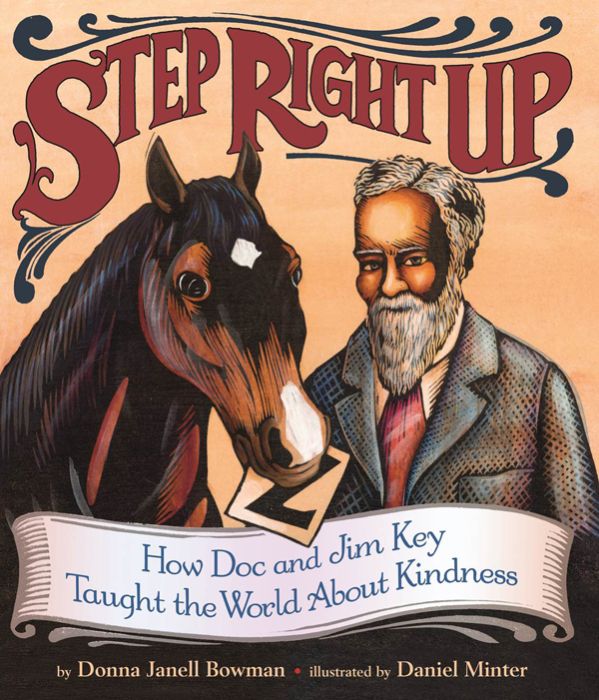
Step Right Up: How Doc and Jim Key Taught the World About Kindness
By Donna Janell Bowman
Illustrators
Illustrated by Daniel Minter
Edition
2018—2019 Prairie Pasque Book Award Winner
NCTE Orbis Pictus Award 2017, Rcommended Book
Booklist 2016 Editors’ Choice, Books for Youth, Middle Readers, Nonfiction
ALSC Notable Children’s Books 2017, Middle Readers
2016 Cybils Finalist, Elementary/Juvenile Nonfiction
By Donna Janell Bowman
Hardcover edition
Publisher Lee & Low Books Imprint Lee & Low ISBN9781620141489
Awards and Honors Beehive Award 2019 Nominee2018—2019 Prairie Pasque Book Award Winner
NCTE Orbis Pictus Award 2017, Rcommended Book
Booklist 2016 Editors’ Choice, Books for Youth, Middle Readers, Nonfiction
ALSC Notable Children’s Books 2017, Middle Readers
2016 Cybils Finalist, Elementary/Juvenile Nonfiction
Step Right Up: How Doc and Jim Key Taught the World About Kindness
 12
12
Out of stock
SKU
9781620141489J
A biography of William “Doc” Key, a former slave and self-trained veterinarian, who taught his horse to read, write, and do math. Afterword, with photographs of Doc and Jim Key. Quotation sources. Author’s sources. Full-color illustrations rendered as linoleum block prints painted with acrylic.
|
Standard MARC Records Cover Art |
Biography Elementary Plus (Grades 1-4)
Biography Elementary Plus
Biography Elementary Plus (Grades 1-4)
For Grades 1-4
This 14 book collections offers beginning readers fascinating biographies and compelling personal stories that provide a view into history or perspective on the issues of our times.
14 books per Year
$282.52 per Year
Interests
Biographies, Nonfiction, Science/STEAM





